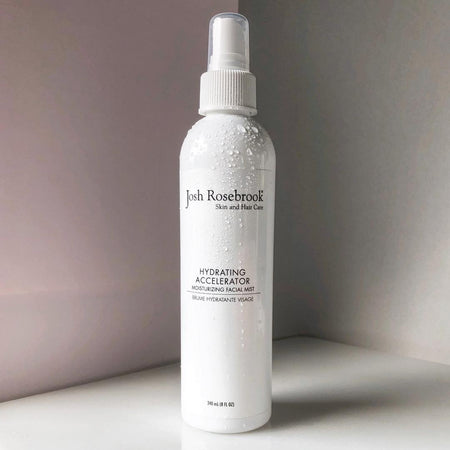A highly intoxicating blend of healing herbs that have natural anti-microbial (anti-bacterial, anti-viral, & anti-fungal) properties. May be helpful for certain rashes, athlete’s foot, nail fungus & other various skin disorders. In addition, Cow Fart Juice has elements of what the skin needs in order to produce a higher amount of elastin when the skin is healing, leading to less scarring and firmer, plumper skin.
“Why Is It Called Cow Fart Juice?”
Because the healing herbs of cow fart juice are part of a mixture of weeds that make up the cows natural diet and the grassy smell that is faintly of the French countryside and its dairy air. (derrière!)
Also, it reminds us to keep a sense of humor about our work. Skin issues are deeply sensitive topic and much of our sense of well-being is tied to how we feel about our skin or in our skin. Sometimes we get so caught up in the idea of promises and controlling the skin that we forget to stop and smell the cow farts.
Cow Fart Juice Aids in Wound Healing (Structural Integrity)
Gotu Kola (Centella asiatica) is a powerful herb native to Southeast Asia with a long history of use in Thai medicine tradition. Modern studies confirmed the longstanding belief in Gotu Kola as an effective aid in wound healing. It is also helpful in skin disorders, scar tissue reduction and treating skin inflammation.
Plantain (Plantago major) is a species of flowering plant that is one of the most abundant medicinal crops in the world. It contains three chemical components: aucubin (an antimicrobial agent), allantoin (which stimulates cellular growth), and mucilage (which reduces pain and discomfort in the skin). For hundreds of years, poultices of plantain leaves have been applied to wounds and sores to soothe the skin and encourage cellular regeneration.
Blue Violet (Viola sororia) is a small, perennial wildflower whose leaves are a natural and non-irritating source of salicylic acid. Blue violet also contains saponins and flavonoids. These phytochemicals can protect the skin against environmental elements and glycation. Blue violet, like plantain, contains mucilage, which helps to hydrate and reduce discomfort in the skin.
Cow Fart Juice “Manages” the Skin’s Microbiome (Biome)
Neem (Azadirachta indica): We use both an infusion of whole leaves, twigs and bark as will as cold-pressed oil from the seeds and fruits of the Neem Tree. Variously known as “Sacred Tree,” “Heal All,” “Nature’s Drugstore,” “Village Pharmacy” and “Panacea for all diseases,” it is one of the most popular traditional Ayurvedic treatments for skin diseases. All parts of the whole plant are believed to be antiseptic, febrifuge, anthelmintic, antifungal, antibacterial, parasiticidal, pediculocid and antiviral yet is considered to have no side effects.
Basil (Ocimum basilicum) is considered “royalty” in some cultures as it can act as a potent adaptogen, meaning that it helps the body balance and adapt to stress. In addition, basil effectively manages the body’s natural microbiome as it actively reduces pathogenic microorganisms while supporting the microbiota that support the skin’s natural processes. This is one of the reasons why our pesto recipe is one of the favorites in our Microbiome: The Good, The Bad, and The Ugly workshops!
Organic Sesame Oil (see more below) The oil we infuse the above herbs into is just as important as the herbal actions for supporting the skin’s natural microbiome. The benevolent microbes that live on the skin (such as S. epidermis) feed on triglyceride-rich fatty acids found in our sebum, elevating Cow Fart Juice to the status of an effective and appropriate prebiotic skin-food for these healthy bacteria.
Cow Fart Juice Mimics Key Components of Your Natural Skin Moisture Factor (Oil/Water)
Herbal-Infused Oils In addition to the prebiotic properties of the herbal-infused oils (noted above), the fatty acid makeup of the oil itself in the proportions that we use, make it effective and appropriate for use on skin that needs to “build-up” its acid mantle (possibly due to past barrier disruption). Simply the fact that the entire plant matter of the herbs has been infused into the traditionally prepared oil changes some of the properties of the oil making an oil like this more comparable with the skin.
Plant-Derived Squalane Similar to the squalane content in human sebum (the oil portion of skin’s natural protective barrier), it mimics a crucial component of how the skin makes its own moisturizer. The large molecule formation of it offers additional protection from bacterial, viral, and fungal infections as well as helps to keep the product stable without the use of an artificial preservative.
Proportion Our method of oil-blending uses proportions that “teach” the skin how to rebuild itself. Rather than just “doing the job” for it, we use the herbal oils to give the skin what it needs and then allow it to respond. (It’s a method that works well with preschoolers too…)
Apply as a spot treatment (1 drop) over compromised or wounded skin. This is not a moisturizer.
Use as an oil cleanser (or pre-cleansing oil for double-cleansing) on skin that has open wounds or is prone to infection.
For external use only.
Pure Olive Squalane, Organic Sesamum Indicum (Sesame) Oil Infused with Centella Asiatica (Gotu Kola) and Ocimum Tenuiflorum (Holy Basil), Pressed Oil of Organic Azadirachta Indica (Neem) from the Leaves and Fruits, Herbal Extraction of Cinnamomum Camphora (Camphor), Pure Essential Oils of Organic Rosa Damascena (Bulgarian Rose) and Ecologically Harvested Santalum Album (Sandalwood)







